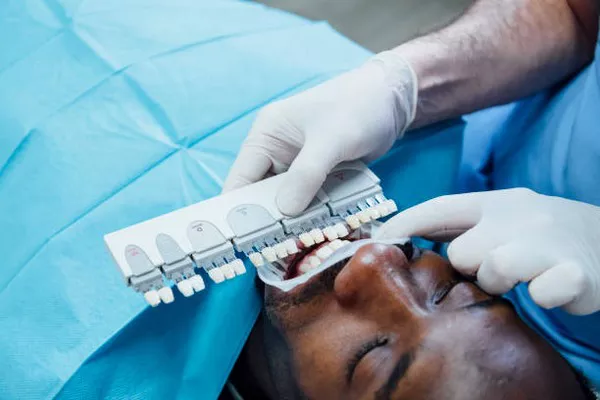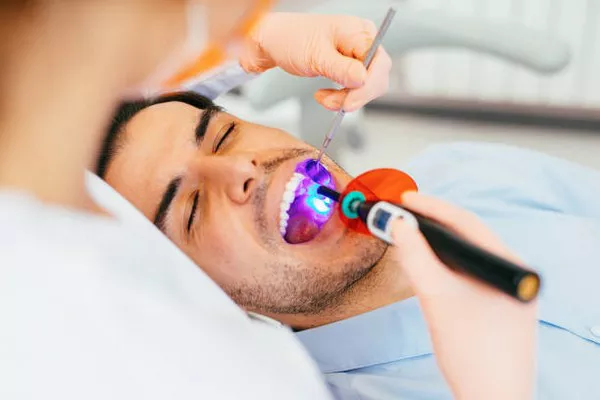To comprehend why bottom teeth may appear more yellow than upper teeth, it’s crucial to delve into the intricate structure of teeth. Teeth consist of multiple layers, with enamel and dentin being the primary contributors to tooth color.
Enamel, the outermost layer of the tooth, is translucent and primarily composed of minerals. Its role is to protect the underlying dentin and pulp from damage and decay. Dentin, located beneath the enamel, is a hard tissue that makes up the majority of the tooth structure. Unlike enamel, dentin is not translucent but is instead naturally yellowish in color. The thickness and density of enamel and dentin vary across individuals, influencing the overall color of the teeth.
Common Causes of Yellowing
Numerous factors can contribute to the yellowing of teeth, including poor oral hygiene practices, smoking, dietary habits, and aging. Inadequate brushing and flossing can lead to the accumulation of plaque and tartar, which harbor bacteria and stains, resulting in yellow discoloration over time. Smoking tobacco products introduces tar and nicotine to the mouth, which can adhere to the enamel surface, causing noticeable yellowing.
Dietary choices also play a significant role in tooth color. Consuming foods and beverages rich in pigments, such as coffee, tea, red wine, and certain fruits like berries, can stain the enamel and contribute to yellowing. Additionally, acidic foods and drinks can erode enamel, making the underlying dentin more visible and enhancing the yellow appearance of the teeth. As individuals age, the enamel naturally wears down, exposing more of the dentin and exacerbating tooth discoloration.
Differences Between Upper and Lower Teeth
One intriguing aspect of tooth discoloration is the potential disparity between the yellowing of upper and lower teeth. While both sets of teeth are exposed to similar external factors, lower teeth may appear more yellow due to several reasons.
One theory suggests that saliva concentration differs between the upper and lower jaws, leading to variations in tooth color. Saliva acts as a natural cleanser, helping to rinse away food particles and neutralize acids in the mouth. However, the flow of saliva may be more pronounced in the upper jaw, resulting in increased cleansing action and reduced staining on upper teeth compared to lower teeth.
Furthermore, lower teeth may be more susceptible to staining agents due to their closer proximity to the tongue and the intake of food and beverages. The constant movement and contact with the tongue can facilitate the retention of pigmented substances on the enamel surface, contributing to more noticeable yellowing over time.
see also: Do Gums Reattach After Deep Cleaning Reddit
Prevention Tips
Maintaining optimal oral hygiene practices is essential for preventing further yellowing of teeth. Regular brushing with fluoride toothpaste helps remove plaque and surface stains, while flossing aids in cleaning between teeth and along the gumline. Dentists recommend brushing at least twice a day and flossing daily to effectively remove plaque and prevent tartar buildup.
In addition to proper oral hygiene, scheduling regular dental check-ups and cleanings is crucial for maintaining oral health. Professional cleanings help remove stubborn stains and tartar that cannot be eliminated through regular brushing and flossing alone. Dentists can also provide personalized recommendations for maintaining healthy teeth and gums based on individual needs and risk factors.
Treatment Options
For individuals seeking to address existing tooth discoloration, a variety of treatment options are available. Professional dental procedures, such as teeth whitening treatments and cosmetic bonding, can effectively lighten the appearance of yellow teeth and improve overall smile aesthetics.
Teeth whitening treatments, performed either in-office or with take-home kits prescribed by a dentist, utilize bleaching agents to remove surface stains and lighten the color of enamel. These treatments are safe and effective when administered under professional supervision, yielding noticeable results within a relatively short timeframe.
Cosmetic bonding involves applying a tooth-colored resin material to the surface of the teeth to cover stains and enhance their appearance. This minimally invasive procedure can effectively mask yellow discoloration and restore the natural beauty of the smile.
Lifestyle Adjustments
In addition to professional treatments, making lifestyle adjustments can help reduce tooth discoloration and maintain long-term oral health. Quitting smoking and avoiding tobacco products can significantly decrease the risk of yellowing and staining of teeth, while also reducing the likelihood of developing oral diseases such as gum disease and oral cancer.
Furthermore, moderating consumption of staining foods and beverages, such as coffee, tea, and red wine, can help preserve the whiteness of teeth. Using a straw to drink pigmented beverages can minimize direct contact with the teeth, reducing the risk of staining. Additionally, rinsing the mouth with water after consuming staining substances can help wash away residual particles and prevent discoloration.
see also: What Does A Dental Cleaning Include
When to See a Dentist
While mild tooth discoloration may be addressed through lifestyle changes and over-the-counter whitening products, persistent or severe discoloration may warrant professional intervention. Signs that indicate the need for a dental consultation include:
Persistent yellowing or staining that does not improve with oral hygiene practices.
Tooth sensitivity or discomfort associated with discoloration.
Changes in tooth color accompanied by other oral health issues, such as bleeding gums or bad breath.
In such cases, scheduling a consultation with a dentist is recommended to evaluate the underlying cause of the discoloration and determine the most appropriate treatment approach.
Conclusion
Understanding the factors contributing to yellowing of bottom teeth and implementing preventive measures can help maintain a bright and healthy smile. By prioritizing proper oral hygiene, making lifestyle adjustments, and seeking professional dental care as needed, individuals can preserve the natural beauty of their teeth and enjoy optimal oral health for years to come.
You Might Be Interested In





























